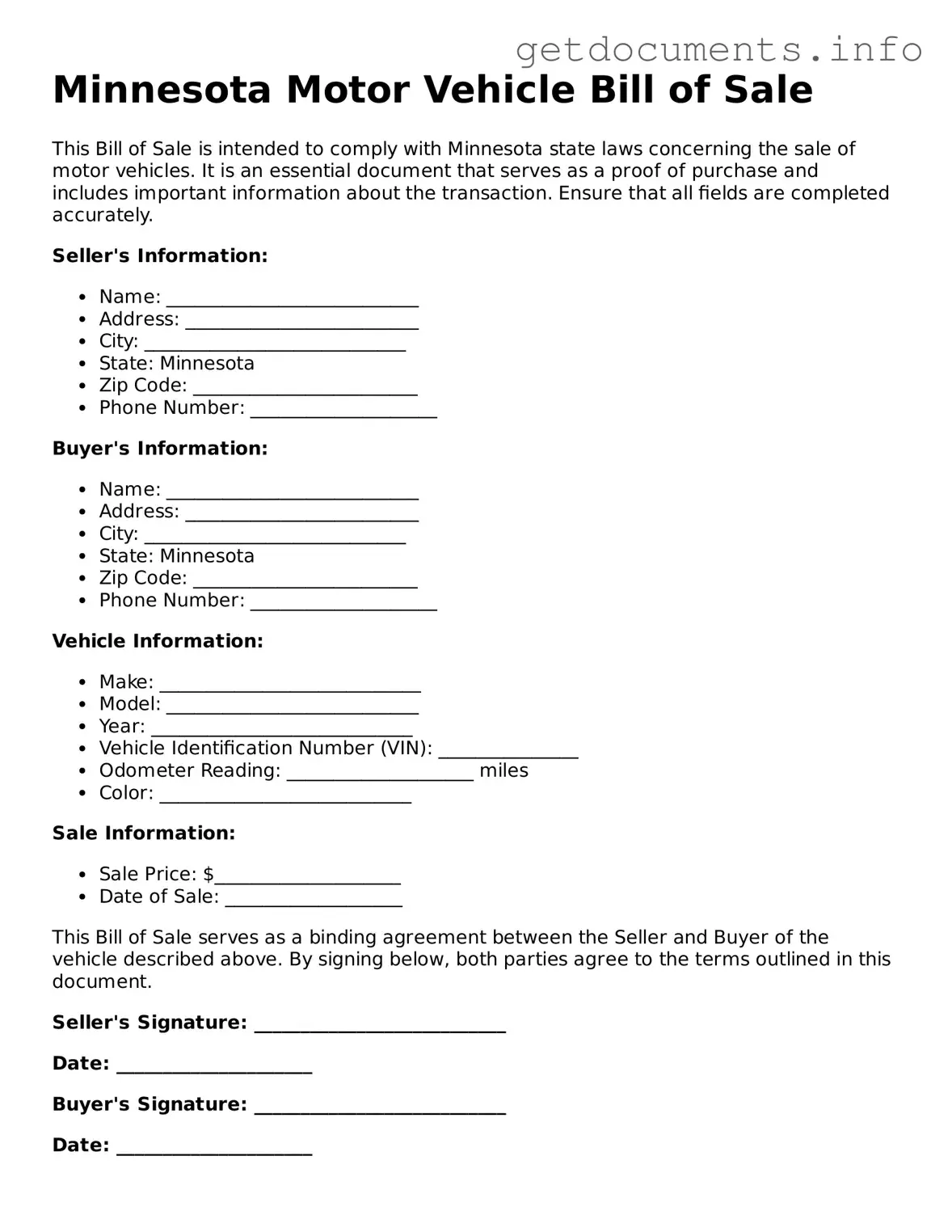Free Motor Vehicle Bill of Sale Template for Minnesota
The Minnesota Motor Vehicle Bill of Sale form is a legal document used to record the sale of a motor vehicle between a seller and a buyer. This form serves as proof of the transaction and includes important details such as the vehicle's identification number, sale price, and the parties involved. To ensure a smooth transfer of ownership, it is essential to fill out the form accurately.
Start the process by filling out the form below.
Access Motor Vehicle Bill of Sale Editor
